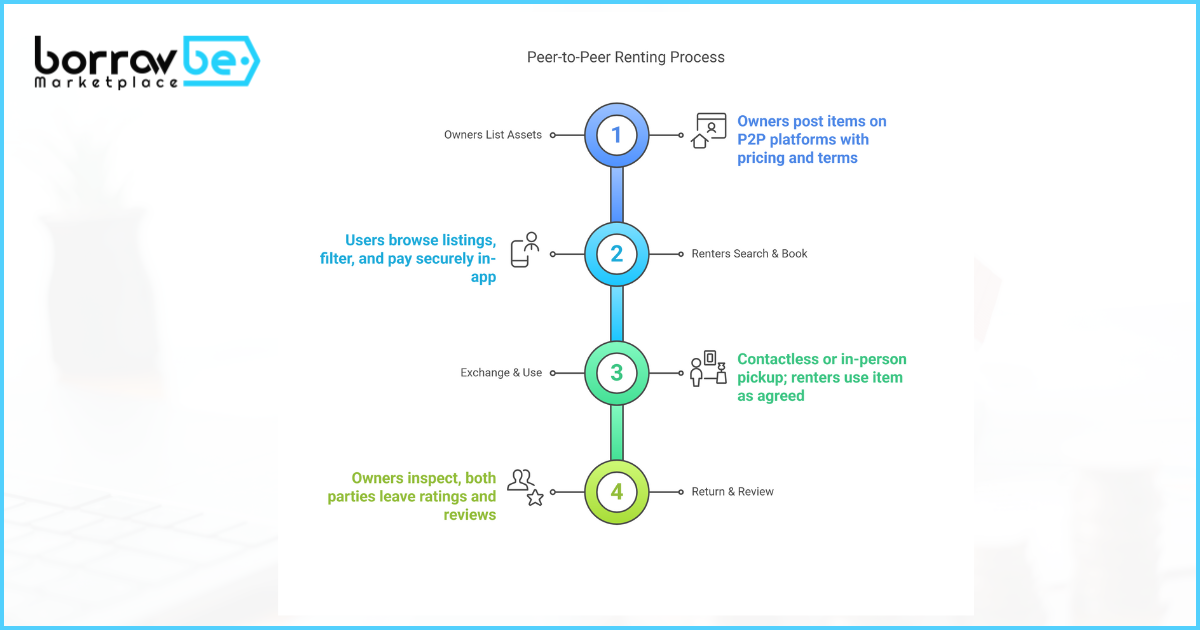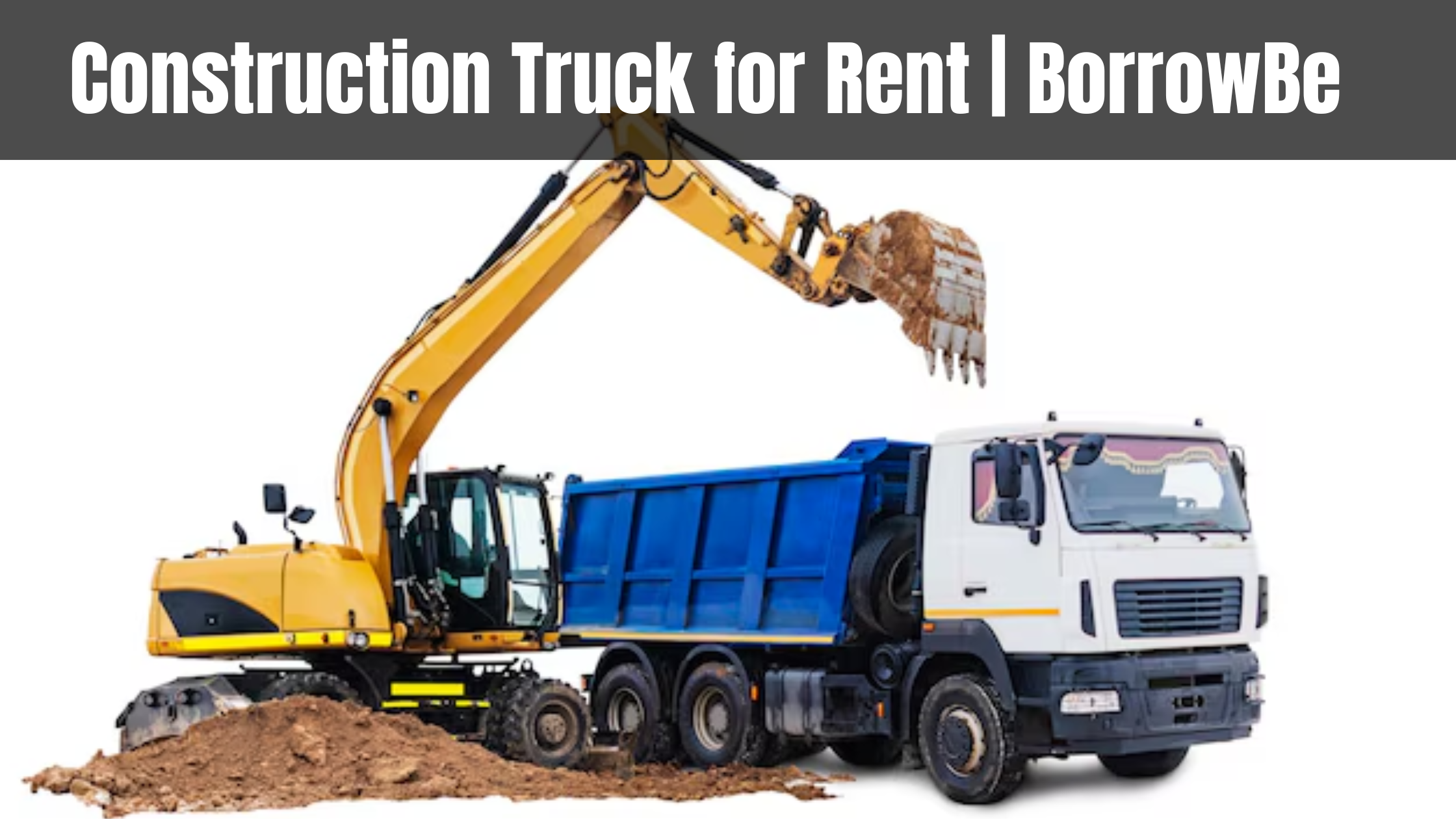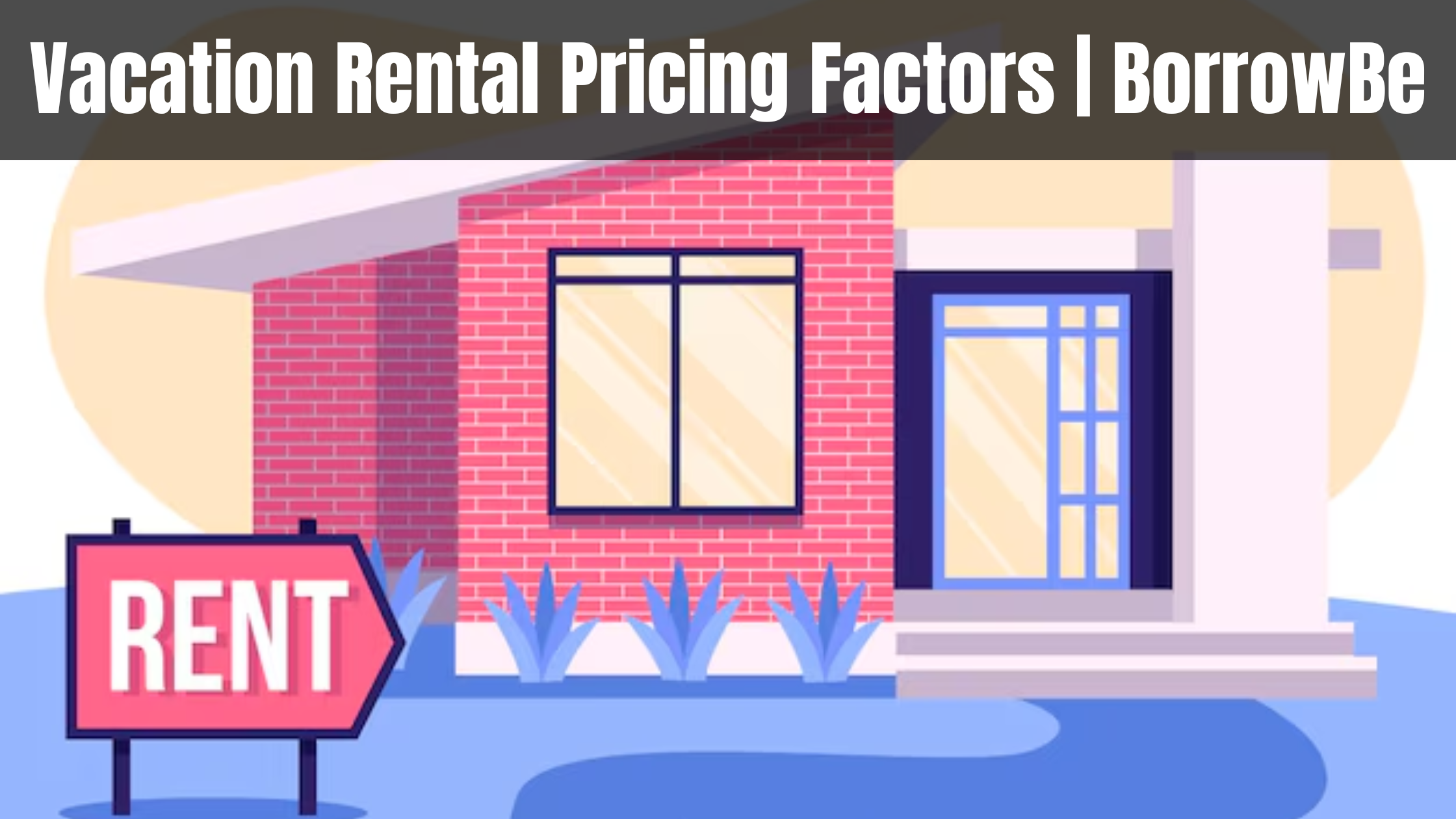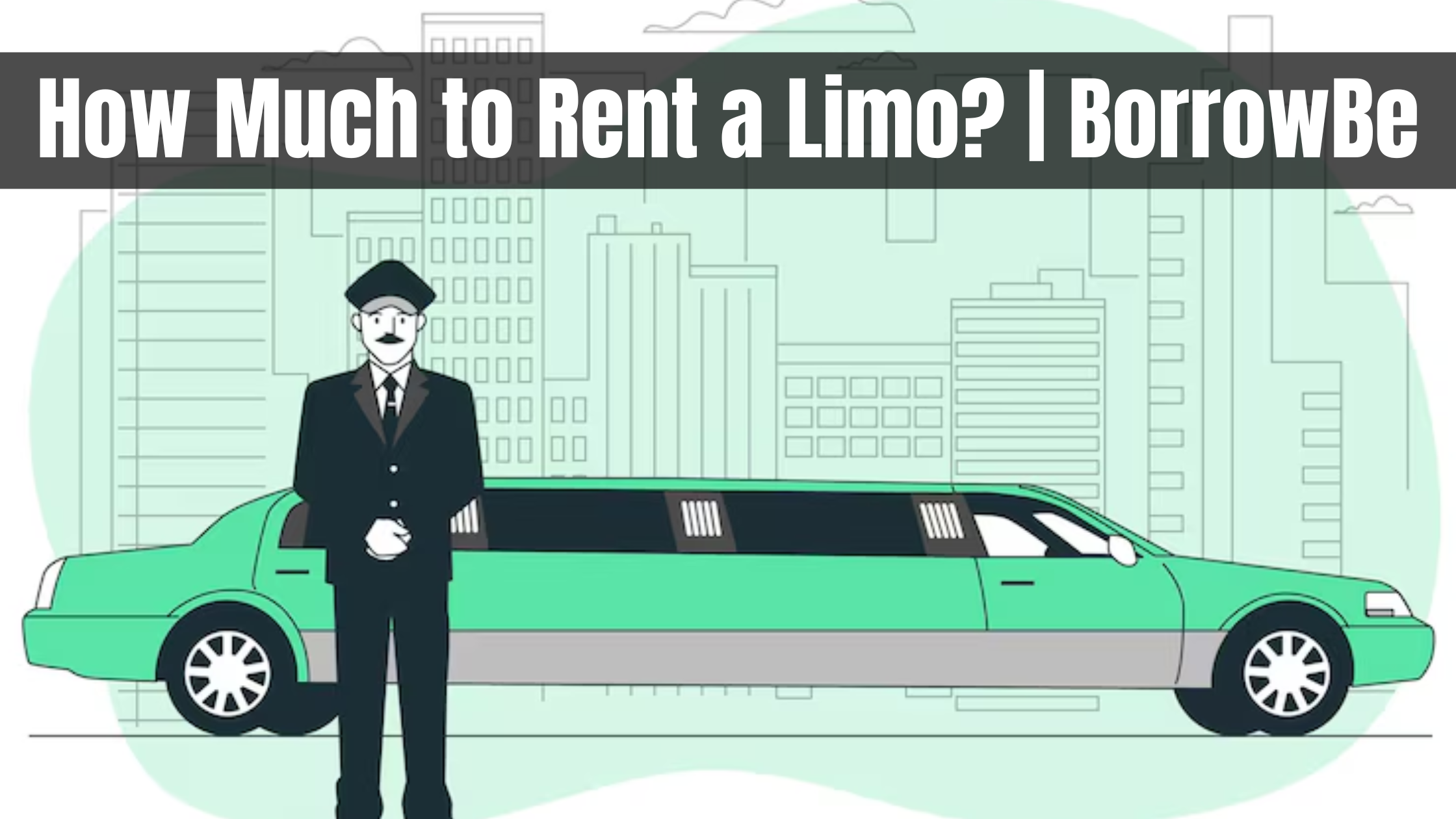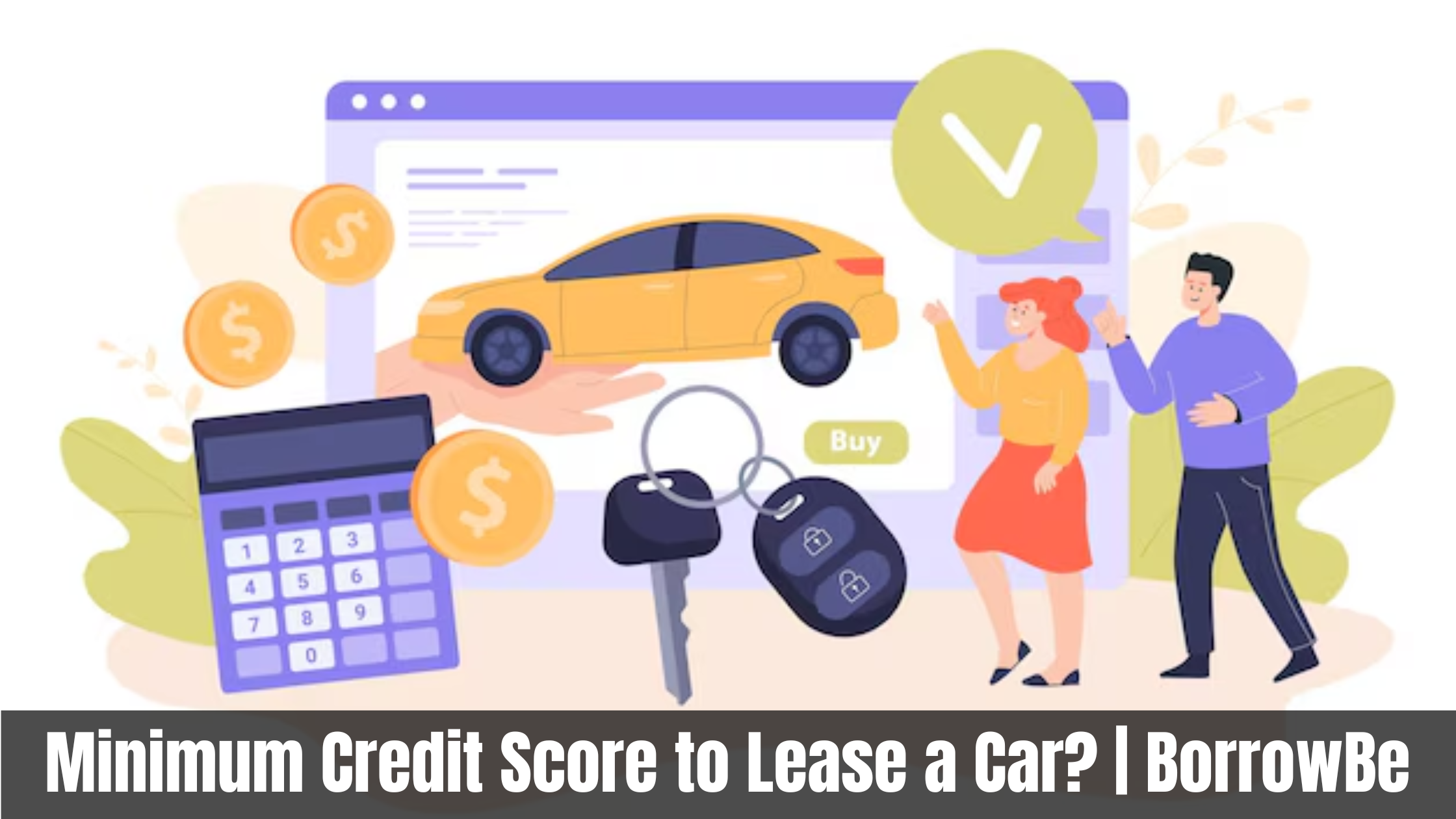The peer-to-peer (P2P) rental economy is exploding, with platforms like Airbnb, Turo, and BorrowBe transforming how people access—and profit from—assets. Instead of traditional rental companies acting as middlemen, P2P renting connects owners directly with renters, creating a more flexible, affordable, and community-driven marketplace.
In this guide, we’ll break down:
✔ How P2P renting works (step-by-step)
✔ Why it’s growing 3X faster than traditional rentals
✔ Top P2P rental platforms for different asset types
✔ How to stay safe when renting or leasing
How Peer-to-Peer Renting Works (Step-by-Step)
1. Owners List Their Assets
- Items like cars, tools, cameras, or even parking spaces are posted on P2P platforms.
- Owners set pricing, availability, and rental terms (hourly, daily, weekly).
🔹 *Example: A photographer lists their - 3,000dronefor∗∗
- 3,000dronefor∗∗150/day** on BorrowBe.*
2. Renters Search & Book
- Users browse listings, filtering by location, price, and reviews.
- Secure in-app payments handle transactions.
3. Exchange & Use
- Contactless pickup (keys via lockboxes) or in-person handoff.
- Renters use the item for the agreed period.
4. Return & Review
- Owners inspect for damages.
- Both parties leave ratings & reviews to build trust.
🔹 "The P2P rental market is worth $335 billion and growing 25% yearly." (PwC Report).png)
Why Peer-to-Peer Renting Is Booming
1. Cost Savings for Renters
- 50–80% cheaper than traditional rentals (no corporate overhead).
- No long-term leases—pay only when you need it.
2. Passive Income for Owners
- Monetize idle assets (e.g., a parked car earns
- 500–
- 500–3,000/month).
- Platforms like BorrowBe charge lower fees than dealerships or rental agencies.
3. Sustainability & Reduced Waste
- Shared use = fewer resources wasted.
- The average power tool is used just 13 minutes in its lifetime—P2P renting maximizes utility.
4. Technology Enables Trust
✔ ID verification
✔ Secure payments (escrow systems)
✔ Insurance options
✔ Review systems
🔹 "67% of millennials prefer access over ownership—fueling P2P growth." (Forbes)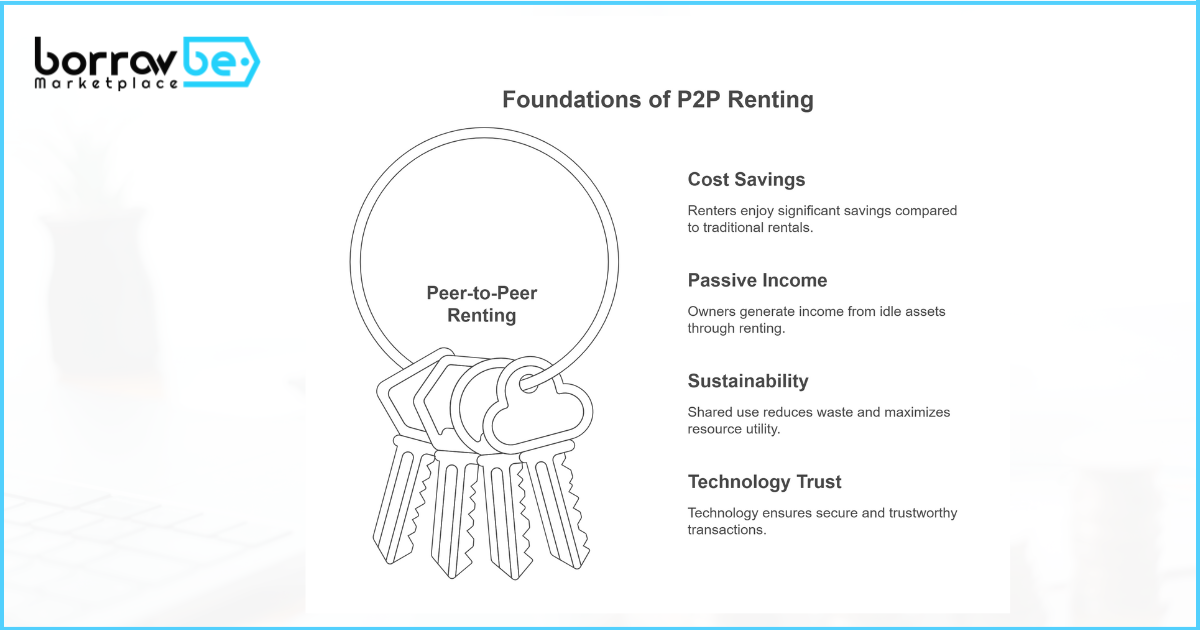
Top Peer-to-Peer Rental Platforms
|
Platform |
Best For |
Key Feature |
|
Tools, cars, electronics, properties |
Low 5% commission, all asset types |
|
|
Turo |
Car rentals |
Luxury & exotic vehicles |
|
Fat Llama |
Tech gear, cameras |
Includes insurance |
|
Outdoorsy |
RVs & campers |
Road trip-friendly |
|
Neighbor |
Storage space |
Rent unused garages |
🔹 Pro Tip: BorrowBe supports more asset categories than niche platforms.
Safety Tips for P2P Renting
For Owners:
✔ Require deposits for high-value items
✔ Use in-app messaging (no outside texts)
✔ Verify renter IDs before handing over items
For Renters:
✔ Read reviews carefully
✔ Inspect items before accepting
✔ Pay via the platform (avoid cash/Venmo)
🔹 "P2P rental fraud affects just 0.1% of transactions—lower than traditional rentals." (J.D. Power)
The Future of P2P Renting
- Blockchain integration for secure contracts
- AI-powered matchmaking (better renter-owner pairing)
- More insurance options (e.g., crypto-backed coverage)
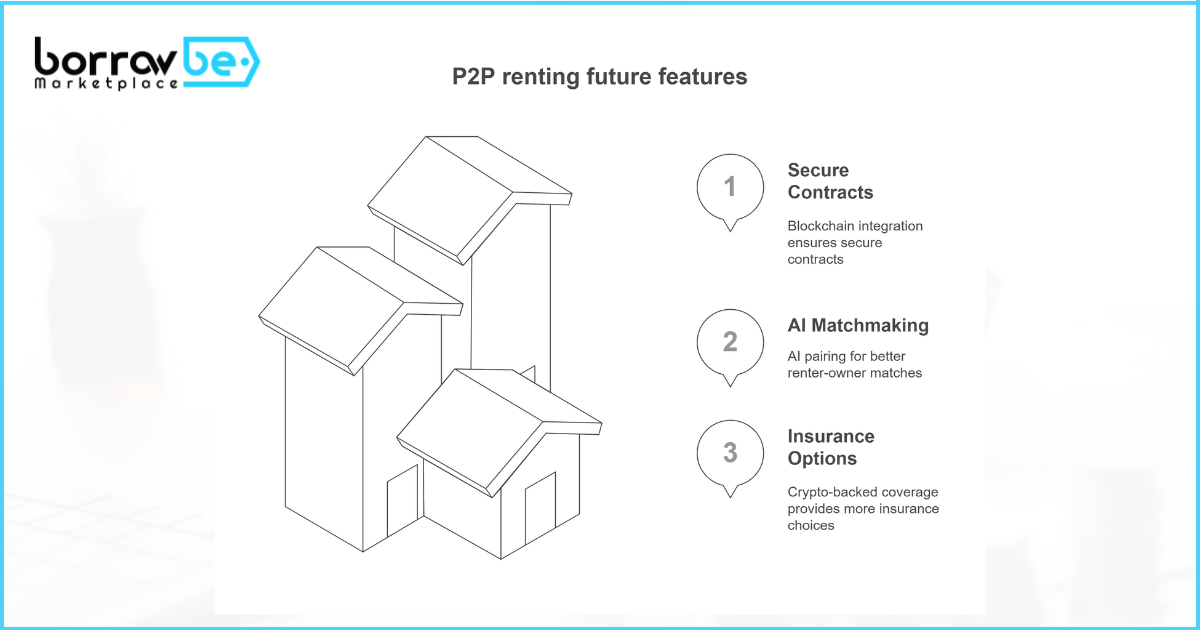
FAQs
What is peer-to-peer (P2P) renting?
Peer-to-peer (P2P) renting is a system where individuals rent out their personal belongings—such as cars, tools, real estate, or equipment—to others through an online platform or app. It removes the middleman (traditional rental companies) and allows people to earn income by sharing underused assets, usually facilitated by a marketplace like Turo, Fat Llama, or Airbnb.
Is peer-to-peer renting safe?
Most P2P renting platforms include safety measures such as identity verification, insurance protection, user reviews, and secure payment systems. While risks still exist, these platforms strive to minimize them and offer support for disputes or damages. It's recommended to use reputable platforms and check user ratings before renting or lending.
What are the benefits of P2P renting?
P2P renting benefits both parties:
- Owners earn passive income from unused items.
- Renters get more affordable and flexible access to things they need short-term.
It also promotes sustainability by maximizing the use of existing resources, reducing the need for new purchases.
What can be rented through P2P platforms?
A wide range of items can be rented, including:
- Vehicles (e.g., Turo)
- Vacation homes (e.g., Airbnb)
- Tools and equipment (e.g., Fat Llama)
- Clothes, bikes, electronics, and more.
If it has value and can be returned in good condition, there's likely a market for it in P2P rentals.
Is peer-to-peer renting legal in all locations?
Peer-to-peer renting is legal in most countries, but certain cities and municipalities may have restrictions—especially on short-term rentals like homes or vehicles. Always check your local laws and regulations before listing or renting an item.
Which peer-to-peer rental platform offers the lowest service fees?
BorrowBe is known for having some of the lowest platform fees, charging only 5%, compared to the 15%–35% typically charged by other major P2P marketplaces.
Can I list my car for rent if it’s still under a loan?
Yes, you often can—but it depends on your car loan agreement. Some lenders permit it, while others explicitly prohibit subleasing. Be sure to review your financing terms or contact your lender before renting out your vehicle.
Related Articles:
Top 10 Most Profitable Things to RentHow BorrowBe Is Changing Asset Sharing
P2P Rental Safety Guide
"Own less, share more—P2P renting is the smartest way to access what you need." 💡
